What is a Splint and How to Make One
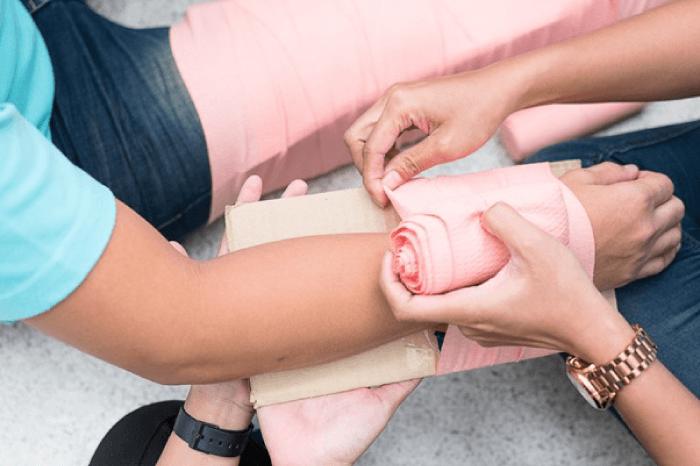
For Victorians, summer means plenty of outdoor activities making the most of the sunshine, warm weather and still days. With a variety of landscapes and adventures to be had, people spend their days hiking the hillside, cycling the bike-friendly terrain, sailing the seas and playing a range of summer sports. Unfortunately, with an increase in activity comes a rise in injuries like broken bones, fractures, sprains and strains.
If you’re someone who loves to get outdoors and get active make sure you’re prepared this summer. But what is a splint? Follow our guide and learn how to apply a splint if an injury occurs on your next outdoor adventure.
What Is A Splint?
Splints are used to immobilise and support an injured part of the body to prevent any further damage occurring. It is a piece of medical equipment but can be created out of makeshift materials if the injury occurs outside the home and you don’t have access to the device.
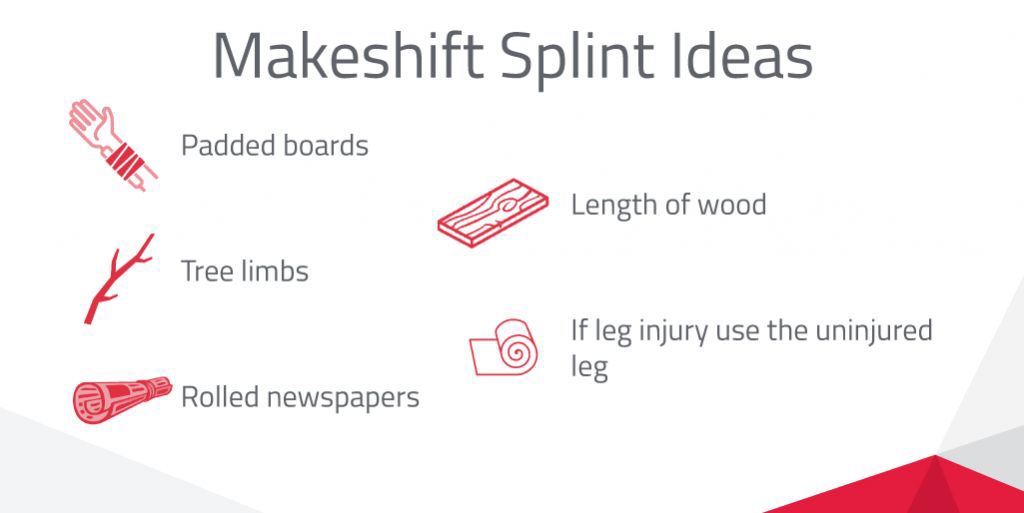
If you need to create a makeshift splint, ensure the splint is long enough to extend past the injured body part at both ends. It must also be wide enough to provide sufficient support to the limb.
If the makeshift piece of equipment meets the criteria and is applied correctly it will provide enough support to guarantee the limb is immobilised and decrease the risk of further damage.
When Should You Use A Splint
Splints are used when a person suffers from a broken bone. It can also be used for severe strains or sprains of a limb.
A splint is used to immobilise an injury to ensure no further damage is caused. It can also help ease the pain of the injury.
If you suspect someone has suffered from a broken bone or serious strain or sprain, it’s essential you apply a splint before moving them to seek medical assistance.
Management Of A Fracture – How To Apply A Splint
1. Follow DRSABCD
2. Ask the casualty to remain as still as possible
3. Check for other injuries such as open, closed and complicated fractures. If there is an open wound; apply gauze, pressure and cover to control bleeding
4. Immobilise fracture with broad bandages to prevent movement at the joints above and below the fracture by:
- Supporting the limb – gently wrap bandages around the natural hollows of the limb
- Position a padded splint along the injured limb
- Place padding between the splint and the natural formation of the limb and secure firmly with bandages
- If a leg fracture, also immobilise foot and ankle
5. Check that bandages are not too tight or too loose every 15 minutes (too tight – the skin is bulging outside the bandage, too loose – you can get multiple fingers underneath the bandage). Watch for signs of loss of circulation to limb.
6. Check for shock and treat if necessary.
7. Seek medical assistance
Splints – The Critical Rules
When applying a splint to immobilise a limb you must follow these critical rules:
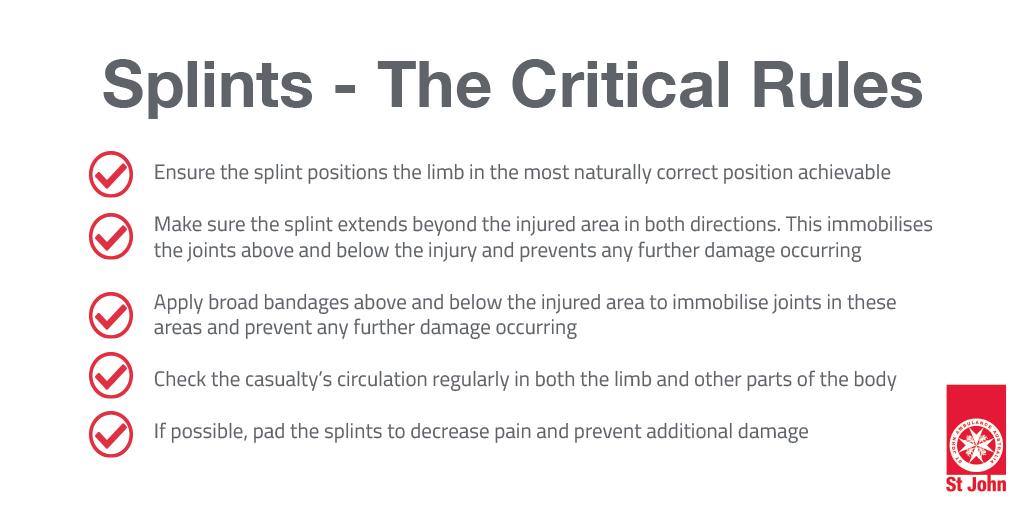
At St John we’re all about embracing the outdoors, exploring your environment and being active, but it’s important to be prepared if an injury does occur. If you’re an active person there are many precautions you can take to avoid injury, but as we know accidents do happen, so when preparing for the season ahead it’s vital that you educate yourself on relevant First Aid techniques specific to your activity.
Fractures, sprains or strains can be caused by an array of activities and they can inflict an incredible amount of pain to the injured person. By ensuring you know the simple steps of creating and applying a splint you will decrease discomfort for the person whilst minimising the risk of further injury occurring.
By being educated in First Aid remedies such as how to create and apply a splint your next summer adventure will be that little bit brighter and safer too.
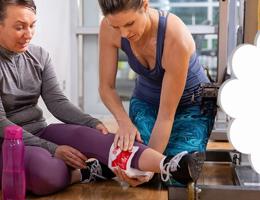
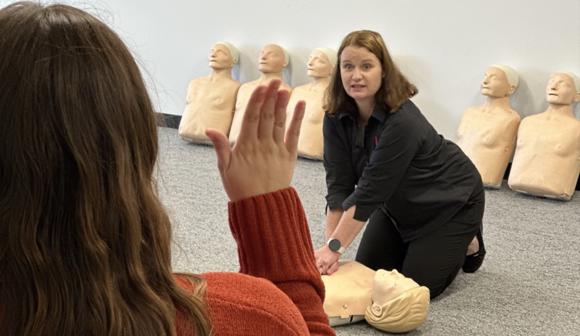
HLTAID011 PROVIDE FIRST AID
Suitable for both people in workplaces and members of the public who would like a comprehensive first aid course.
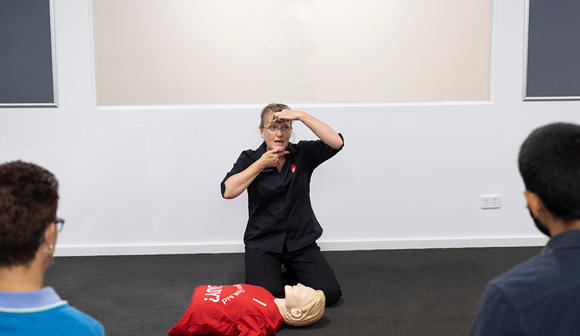
HLTAID009 PROVIDE CARDIOPULMONARY RESUSCITATION
Learn the skills to perform life-saving (CPR) on an adult, child or infant who is unconscious and not breathing normally.
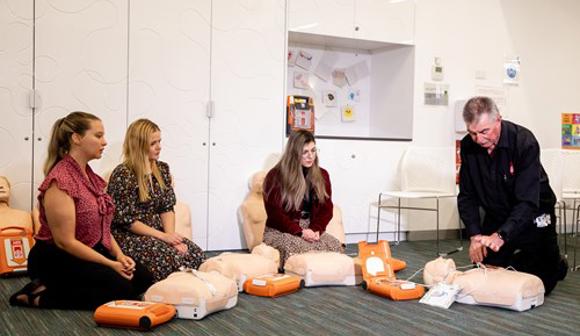
VENUES & LOCATIONS
St John has a range of training locations across Victoria.
